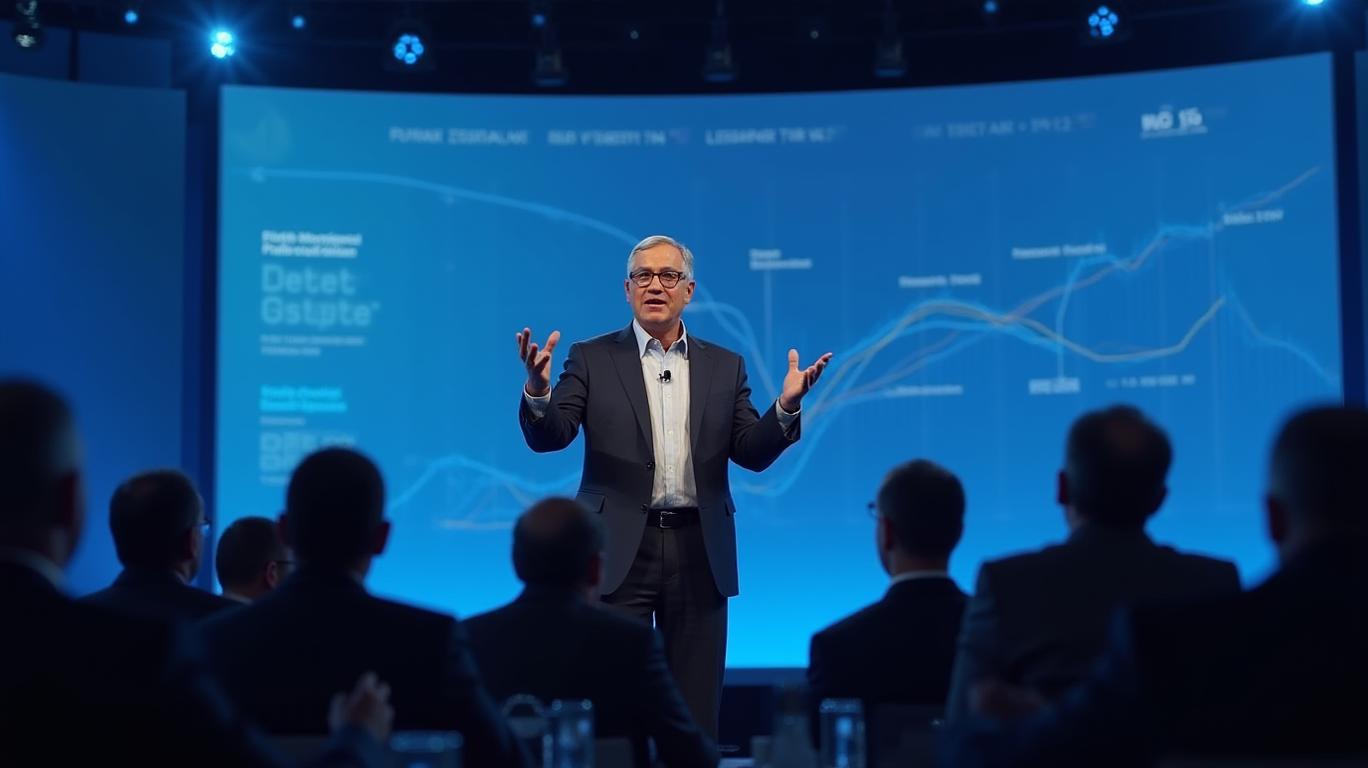Snowflake's AI-Powered Surge: Can Growth Outpace Losses in the Data Cloud Race?
The data cloud revolution is here, and
(SNOW) stands at its epicenter. While the company's GAAP net loss for Q1 FY2026 hit $447.3 million, its non-GAAP operating income turned positive at $91.7 million—a stark contrast that underscores a critical truth: Snowflake is not just a vendor of data tools, but a strategic enabler of AI-driven enterprise transformation. This article dissects whether its aggressive investments in AI and data infrastructure justify its valuation and whether the growth trajectory can ultimately overshadow its losses.
Visualizing the upward momentum in revenue and contractual commitments.
The AI Catalyst: Growth Metrics That Demand Attention
Snowflake's Q1 results are a masterclass in strategic execution. Total revenue soared to $1.04 billion (25.7% YoY growth), driven by 26% year-over-year expansion in product revenue. The net revenue retention rate of 124%—while slightly below prior peaks—remains enviable, reflecting customer loyalty and the stickiness of its AI-integrated platform. Consider these pillars of its AI-driven momentum:
Cortex's Silent Revolution:
Snowflake's AI platform, Cortex, is not a standalone revenue stream but a force multiplier for its core product. Over 5,200 accounts now use AI/ML tools weekly, with customers like Samsung Ads and Kraft Heinz leveraging it to build custom AI assistants and streamline workflows. By embedding AI into its data cloud, Snowflake ensures customers invest deeper in its ecosystem, driving higher usage and retention.Snowpark & Dynamic Tables: The Engine Behind Scalability
These tools, integral to Snowflake's Unistore vision, outperformed expectations in Q1. Dynamic Tables cut data preparation time by 90% for customers like Siemens, while Snowpark's code-friendly interface reduces reliance on third-party tools. Together, they form a moat against hyperscalers like AWS and Azure, which lack Snowflake's unified data architecture.RPO: The Future Is Pledged
Remaining performance obligations hit $6.7 billion (34% YoY growth), with 50% expected to convert within the next year. This “cash flow runway” signals confidence in sustained demand—a critical rebuttal to skeptics who focus solely on GAAP losses.
Does the market reward growth over losses?
Valuation: Growth vs. Profitability—A Delicate Dance
Critics argue that Snowflake's GAAP losses are unsustainable. But this misses the strategic calculus:
- Non-GAAP operating margins improved to 9%, up 442 basis points YoY, thanks to cost efficiencies.
- Cash flow from operations turned positive in Q1, a sign of maturing operations.
- Customer metrics are soaring: The 27% YoY increase in $1M+ annual customers (now 606) and 451 net new customers in Q1 highlight a demand-supply imbalance in the AI-ready data market.
The real question is: Can Snowflake's AI-driven differentiation justify its $28 billion market cap? Compare it to peers:
- Databricks (DBKS) trades at ~$15 billion despite slower growth.
- MongoDB (MDB), a leader in NoSQL, has a $12 billion valuation but lacks Snowflake's AI-first narrative.
Snowflake's 25% FY2026 revenue guidance and 25% free cash flow margin target suggest management is laser-focused on scaling profitably. The stock's forward P/S ratio of ~10x is elevated but aligns with its market leadership in AI-augmented data platforms.
Risks and the Path to Profitability
The path isn't without hurdles.
- Hyperscaler competition: Microsoft and AWS are aggressively bundling AI tools (e.g., Azure OpenAI, SageMaker) to retain customers. Snowflake's response? Unistore and Apache Iceberg support to ensure data liquidity across clouds.
- Margin pressure: GAAP losses will persist until non-cash expenses (e.g., stock-based compensation) taper. However, the non-GAAP income swing to $91.7M in Q1 signals progress.
Why Act Now?
The Snowflake Summit in June will likely unveil new AI capabilities, fueling further adoption. Meanwhile, macroeconomic resilience is evident: 75% of its customers are Fortune 2000 firms prioritizing data infrastructure over cost-cutting. With $2.2 billion in cash and a $1.3B share buyback program, management is both patient and proactive.
Growth metrics vs. peers.
Final Verdict: Buy the Momentum, Not the Losses
Snowflake's losses are not a death knell but investment in owning the AI-data nexus. With 26% revenue growth, a 34% RPO surge, and enterprise customers doubling down on its platform, the company is building a defensible moat in a $200 billion AI market. While profitability lags GAAP metrics, the non-GAAP progress and customer metrics are clear green lights.
Investment Thesis:
- Buy SNOW at current levels if you believe AI adoption will dominate enterprise IT spending over the next decade.
- Hold if you demand immediate GAAP profitability—Snowflake is still in its scaling phase.
- Avoid only if you believe hyperscalers will crush niche players like Snowflake, a risk mitigated by its open architecture and Unistore innovation.
The data cloud is the new battleground for enterprise tech, and Snowflake is its AI-powered titan. The losses? They're the cost of winning the future—one line of code, one chatbot, and one customer at a time.

Comments
No comments yet